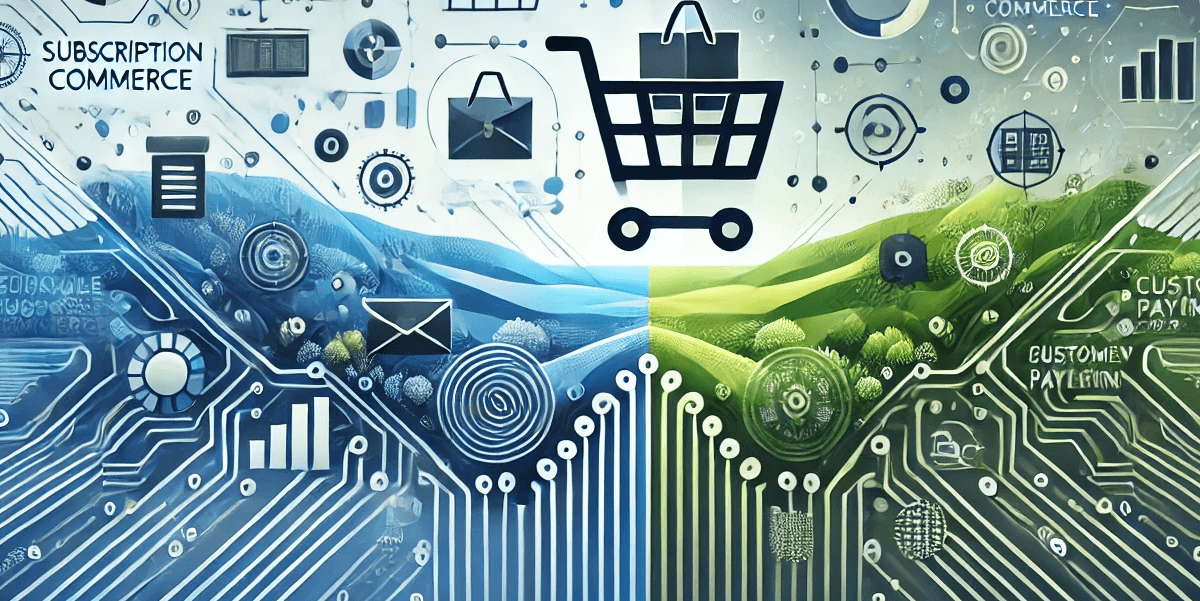Why MSPs Must Transition to Self-Service: A Strategic Imperative
In today's rapidly evolving digital landscape, the role of Managed Service Providers (MSPs) is undergoing a significant transformation. Traditionally, MSPs have operated within a reactive model, where customers reach out via phone or email to resolve issues or request services. However, as the workforce becomes increasingly digital-savvy and businesses demand more efficiency and flexibility, this paradigm is quickly becoming outdated.
The modern workforce, now dominated by Millennials and Gen Z, expects seamless, instant solutions that align with their digital-first mindset. These individuals are accustomed to self-service in many aspects of their lives, from online banking to self-guided learning, and they are bringing these expectations into the workplace. Furthermore, the rise of remote and hybrid work models has created a demand for IT services that are accessible 24/7 from any location, which is something the traditional call-based support model struggles to provide.
For MSPs, the shift towards a self-service model is not just about meeting customer expectations; it's a commercial imperative. By enabling customers to handle routine tasks independently, MSPs can reduce operational costs, improve scalability, and focus their resources on more complex, high-value issues. This transition also provides a competitive edge, allowing MSPs to differentiate themselves in a crowded market by offering modern, customer-centric solutions.
Ultimately, moving towards a self-service model represents a win-win scenario: customers enjoy faster, more efficient service and MSPs gain the ability to scale more effectively while reducing costs. This blog explores the reasons behind this shift, the benefits it brings, and the steps MSPs can take to implement self-service options in their service offerings successfully.
Macro Changes in Workforce
The workforce landscape is undergoing a profound transformation, driven by the rise of Millennials and Gen Z, who are now becoming key decision-makers within organizations. As of 2024, Millennials, who make up the largest segment of the workforce, are increasingly stepping into leadership roles, influencing critical business decisions, including those related to IT services and managed solutions.
Millennials as Decision-Makers Millennials, born between 1981 and 1996, are not only the largest generation in the workforce but also a significant force in corporate leadership. This demographic shift has important implications for Managed Service Providers (MSPs). Unlike previous generations, Millennials prioritize flexibility, digital-first approaches, and corporate social responsibility. For instance, 88% of Millennials expect transparency from the companies they do business with, and 73% are willing to pay more for services and products that align with their ethical and environmental values. These values directly influence their decisions when selecting service providers, making it crucial for MSPs to adapt to these expectations.
Gen Z and Millennial Workforce Dynamics Gen Z, who are expected to comprise 30% of the workforce by 2025, share many of the same values as Millennials but are even more digitally native. Both generations are comfortable with technology and expect seamless, self-service solutions in both their personal and professional lives. This has led to a growing demand for IT services that are not only responsive but also accessible through self-service platforms. Millennials and Gen Z favor these solutions because they align with their expectations for autonomy, efficiency, and real-time access to services.
The Impact of Remote Work The rise of remote work, particularly accelerated by the COVID-19 pandemic, has further entrenched these preferences. As of 2022, as many as 87% of workers considering a job change indicated a preference for hybrid or fully remote positions. For MSPs, this means that providing flexible, self-service IT solutions is no longer optional but essential to meet the needs of a workforce that values convenience and efficiency.
Strategic Implications for MSPs understanding these macro changes is critical. Millennials are now in decision-making roles, are driving a shift towards service providers that offer transparency, sustainability, and digital-first solutions. By integrating robust self-service options and emphasizing ethical practices, MSPs can better align with the values of Millennial decision-makers, thus enhancing their competitive edge in a rapidly evolving market.
The Commercial Imperative
For Managed Service Providers (MSPs), the shift toward self-service models is not only about meeting customer expectations but also about realizing significant cost savings and operational efficiencies. Traditional support methods, such as phone and email, tend to be resource-intensive and expensive. By contrast, self-service interactions cost just a fraction of what it takes to resolve issues through human customer support.
Cost Savings through Self-Service options dramatically reduce the cost per interaction. For example, a single self-service interaction can cost mere pennies compared to the several dollars it might cost to handle a similar query through traditional support channels. This reduction in cost is due to the automation of routine tasks and the decreased need for human intervention. For MSPs, this means that resources can be reallocated from handling repetitive inquiries to focusing on more complex, value-added tasks, ultimately improving both service efficiency and customer satisfaction.
Scalability and Operational Efficiency Implementing self-service tools allows MSPs to scale their operations more efficiently. As more customers resolve their issues independently, the volume of support tickets decreases, reducing the workload on the support team. This scalability is crucial as MSPs grow, enabling them to support a larger customer base without a proportional increase in support staff. In addition, integrating automated workflows and ticketing systems can further streamline operations, leading to faster resolution times and improved customer experiences.
Competitive Advantage Beyond cost savings, top-performing companies are using managed services, including self-service options, strategically to gain a competitive edge. These companies leverage partnerships to close capability gaps and innovate their service offerings, which in turn drives higher profit margins and faster market response times. By adopting self-service models, MSPs can position themselves as strategic partners that not only reduce operational costs but also enhance their clients' ability to innovate and grow.
The commercial imperative for MSPs to adopt self-service models is evident. The significant cost savings, combined with the ability to scale efficiently and offer strategic advantages to clients, make self-service not just an option but a necessity in the modern IT services landscape.
Improvement in Customer Experience
When considering the shift to self-service options, MSPs must recognize that different customer groups have varying preferences and needs. Specifically, the demand for self-service varies significantly between large enterprises and small to medium-sized businesses (SMBs), and understanding these distinctions is crucial for delivering an optimal customer experience.
Enterprise vs. SMB Preferences Enterprises, with their more complex IT environments and larger resources, often show a stronger preference for self-service options. This is because self-service portals allow them to manage routine tasks quickly and efficiently without the need for direct intervention from the MSP. Enterprises value these capabilities as they align with their need for scalability and efficiency, reducing the time and cost associated with traditional support channels.
On the other hand, SMBs, while increasingly adopting digital-first approaches, may still require more personalized support. Although many SMBs are becoming more comfortable with self-service tools, there is still a significant portion that values in-person or traditional support methods, especially when dealing with more complex issues. The limited IT resources in many SMBs mean they often need more guidance during the implementation and troubleshooting processes. Therefore, while self-service can be a valuable tool for SMBs, MSPs must ensure that robust traditional support channels are also available.
The Need for a Hybrid Approach for MSPs, is the key to enhancing customer experience lies in offering a balanced solution. While self-service should be readily available for those who prefer it—especially for routine tasks and straightforward queries—it is equally important to provide access to traditional support methods. This is particularly true for situations that require in-depth troubleshooting, bespoke configurations, or hands-on assistance. Recognizing that some interactions will always necessitate human intervention is critical to maintaining high customer satisfaction.
Moreover, the effective use of automation and AI in self-service platforms can further enhance the experience by providing more personalized, efficient, and context-aware support options. However, MSPs should remain mindful that not all customer segments will readily embrace these technologies, and some may still prefer the assurance of human-led support.
Unifying Customer Experience Across Multiple Portals is not a the reality today, the likelihood of providing a single portal that does everything is low. This means that MSPs need to ensure a seamless customer experience across multiple portals. One effective strategy is to use APIs to unify these disparate systems into one coherent interface. By leveraging APIs, MSPs can integrate various platforms, ensuring that customers can access all necessary services without switching between different logins or user interfaces.
Implementing Single Sign-On (SSO) is another critical step in this process. SSO allows customers to log in once and access all integrated services, significantly reducing friction and improving the user experience. Additionally, MSPs should consider providing an aggregation point, such as a unified dashboard, where all relevant data and tools are accessible from one location. This approach not only enhances convenience but also ensures that users have a consistent experience across all touchpoints.
ROI of Implementing a Self-Service Platform for MSPs
Implementing a robust self-service platform can provide significant financial returns for Managed Service Providers (MSPs), both in terms of cost savings and enhanced revenue opportunities.
Cost Savings: One of the primary financial benefits of adopting a self-service platform is the substantial reduction in operational costs. Studies have shown that self-service can drastically reduce the cost per interaction. For example, while a traditional phone or email support interaction might cost several dollars, a self-service interaction can cost just a fraction of that amount. This reduction is mainly due to the automation of routine tasks and the decreased need for human intervention.
A concrete example from a Forrester study highlighted that organizations could achieve a 315% ROI by modernizing their customer service with automated and self-service tools. This study estimated that organizations could see savings of approximately $978,000 by retiring older, less efficient customer service solutions, further illustrating the financial upside.
Increased Revenue: Beyond cost savings, self-service platforms can also drive additional revenue by improving customer satisfaction and loyalty. Satisfied customers are more likely to continue using services and even expand their engagement with an MSP. For example, by improving the efficiency of service and reducing the time customers spend waiting for support, MSPs can improve customer satisfaction by up a significant amount, leading to increased customer retention and potentially higher lifetime customer value.
Moreover, self-service tools can enable MSPs to focus their resources on high-value, strategic projects, allowing for innovation and the development of new service offerings. This shift not only opens up new revenue streams but also strengthens the MSP's market position.
Faster Time to ROI: The time to realize ROI from implementing self-service solutions can be relatively short. For instance, smaller businesses, which often have simpler tech stacks, can see ROI in under year from the project start. Larger enterprises, which may have more complex systems, might take slightly longer, averaging around 22 months. However, in all cases, the long-term benefits significantly outweigh the initial investment.
Investing in a self-service platform offers MSPs not only cost reductions but also the potential for increased revenue and a faster return on investment. This makes self-service an essential strategy for MSPs looking to enhance their service offerings and remain competitive in the evolving IT landscape.
Action list For Implementing Self Service for MSPs
- Develop a User-Friendly Self-Service Portal
- Centralize Services: Implement a portal that aggregates key services such as ticketing, billing management, and knowledge bases. Ensure it is intuitive and easy to navigate to encourage user adoption.
- Implement Robust Search Functionality: Make it easy for users to find information quickly, which can significantly reduce support request volumes.
- Leverage APIs to Integrate Multiple Platforms
- Seamless Integration: Use APIs to integrate disparate systems, ensuring that data flows seamlessly between different platforms within the self-service portal. This approach will provide a unified experience for users, reducing the need for multiple logins and manual data entry.
- Seamless Integration: Use APIs to integrate disparate systems, ensuring that data flows seamlessly between different platforms within the self-service portal. This approach will provide a unified experience for users, reducing the need for multiple logins and manual data entry.
- Implement Single Sign-On (SSO)
- Simplify Authentication: Deploy SSO to enable users to access all services within the self-service portal with a single login. This reduces friction and enhances security by minimizing the number of credentials users need to manage.
- Enhance Security: Utilize SSO to streamline identity management and comply with security regulations, such as HIPAA or SOX, which require strict access control measures.
- Educate and Onboard Customers
- Training Programs: Offer onboarding sessions and continuous education to help customers fully utilize the self-service tools. Provide tutorials, webinars, and documentation to ensure customers are comfortable with the platform.
- Promote Benefits: Actively communicate the advantages of using self-service, such as time savings and greater control over service management, to encourage adoption.
- Monitor and Optimize Self-Service Performance
- Data Analytics: Use analytics to monitor how customers interact with the self-service portal. Track key metrics such as time spent on the portal, common search queries, and support ticket volumes to identify areas for improvement.
- Continuous Improvement: Regularly update the platform based on customer feedback and analytics. Implement new features or improve existing ones to enhance the user experience continually.
- Focus on Customer Segmentation
- Tailor Self-Service Options: Recognize that enterprises and SMBs may have different needs and preferences. Customize the self-service experience based on customer size, ensuring that all user groups find the platform valuable and accessible.
- Tailor Self-Service Options: Recognize that enterprises and SMBs may have different needs and preferences. Customize the self-service experience based on customer size, ensuring that all user groups find the platform valuable and accessible.
- Invest in Automation and AI
- Automate Routine Tasks: Implement AI-driven tools to handle routine inquiries and tasks, such as password resets or basic troubleshooting, freeing up human resources for more complex issues.
- Proactive Support: Use AI to predict and address issues before they escalate, providing a more proactive support experience that can reduce downtime and improve customer satisfaction.
- Evaluate and Communicate ROI
- Quantify Benefits: Regularly assess the financial impact of the self-service platform by calculating cost savings, revenue growth, and time to ROI. Use this data to demonstrate the value of the platform to stakeholders and customers.
By following these action steps, MSPs can effectively implement a self-service model that not only meets the evolving needs of their customers but also drives operational efficiency and profitability
Wrap-Up and Conclusion
As the digital landscape continues to evolve, Managed Service Providers (MSPs) must adapt to meet the changing needs of their customers. The shift towards self-service models is not just a trend but a necessity driven by the demand for efficiency, scalability, and enhanced customer experiences. By implementing a robust self-service platform, MSPs can significantly reduce operational costs, improve customer satisfaction, and unlock new revenue opportunities.
The integration of APIs, Single Sign-On (SSO), and automation tools are critical steps in creating a seamless and secure user experience across multiple platforms.
In today's competitive market, the ability to offer a flexible, user-friendly self-service portal can be a key differentiator for MSPs. It empowers customers to manage their IT needs independently, freeing up MSP resources to focus on more strategic initiatives. This transformation not only benefits the customer but also positions the MSP as a forward-thinking partner capable of delivering modern, efficient solutions.
For MSPs looking to stay ahead, partnering with a platform like Cloudmore can make all the difference. Cloudmore offers a comprehensive suite of tools designed to help MSPs streamline operations, integrate multiple services seamlessly, and deliver a superior customer experience. By leveraging Cloudmore's advanced capabilities, MSPs can ensure they are not only meeting but exceeding customer expectations in an increasingly self-service-oriented world.
Take the next step towards transforming your service delivery with Cloudmore - because in today's market, staying ahead means staying connected, efficient, and customer-centric.
END
Share this
You May Also Like
These Related Stories

Microsoft’s CSP Shake-up: How Top MSPs Can Turn Requirements into Competitive Advantage

Understanding the Differences Between Subscription Commerce and E-Commerce Platforms


